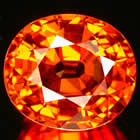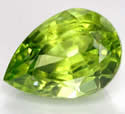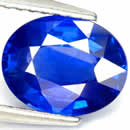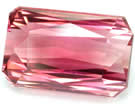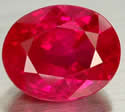   Powers & Magickal uses:
Healing, Protection, Health, Beauty.
Powers & Magickal uses:
Healing, Protection, Health, Beauty.
Red Jasper:
Energy type:
Projective. Associated element: Fire.
Used to return negative energy to the
sender.
Green Jasper:
Energy type: Receptive. Associated element:
Earth.
Used as a health talisman, and to promote quality sleep.
Brown
Jasper:
Energy type: Receptive. Associated element: Earth.
Used for
centring and grounding after magickal rituals.
Mottled
Jasper:
Energy type: Projective. Associated element: Air.
Used for
protection against drowning.
Jet
Black fossilised wood, sometime called
Witches' amber.
Powers & Magickal uses: Protection,
Anti-nightmare, Luck, Divination, Health.
Energy type: Receptive. Associated
elements: Earth, Spirit.
Used to absorb negative energies, to prevent
nightmares, and to aid divination. Witches sometimes wear it in a necklace of
alternating amber (representing the Goddess) and jet beads.

Lapis Lazuli
Rare and expensive blue stone with
gold flecks.
Powers & Magickal uses: Healing, Joy, Love, Fidelity,
Psychic, Protection, Courage.
Energy type: Receptive. Associated element:
Water.
Malachite
 Powers & Magickal uses:
Power, Protection, Love, Peace, Business success.
Powers & Magickal uses:
Power, Protection, Love, Peace, Business success.
Energy type: Receptive.
Associated element: Earth.
Used to increase your sending power during
rituals.
Obsidian
 Powers & Magickal uses:
Protection, Grounding, Divination, Peace.
Powers & Magickal uses:
Protection, Grounding, Divination, Peace.
Energy type: Projective. Associated
element: Fire.
Often cut into polished flat sheets for use as a scrying
mirror.
Onyx
 Powers & Magickal uses:
Protection, Defensive magick, Reducing sexual desires.
Powers & Magickal uses:
Protection, Defensive magick, Reducing sexual desires.
Energy type:
Projective. Associated element: Fire.
Be wary of having too much onyx in the
house as it can reduce your sexual desires to a dangerously low level, thus
preventing the natural release of emotional energies.
Quartz
  Powers & Magickal uses:
Protection, Healing, Psychism, Power, Lactation.
Powers & Magickal uses:
Protection, Healing, Psychism, Power, Lactation.
Pure (Clear)
Quartz:
Energy types: Receptive, Projective. Associated elements: Water,
Fire.
Used to unblock energy centres and aid the body's natural healing
process. It is also used in the tips to wands, as a scrying tool, and as
representations of the God & Goddess on the altar. There however hundreds of
other uses for this versatile crystal.
Blue Quartz:
Energy type:
Receptive. Associated element: Water.
Used to promote peace and
tranquillity.
Green Quartz:
Energy type: Receptive. Associated
element: Water.
Used to increase wealth.
Rose Quartz:
Energy
type: Receptive. Associated element: Water.
Used to open the heart chakra,
and to promote peace and harmony.
Rutilated Quartz:
Energy type:
Projective. Associated element: Fire.
Used to increase personal energy during
rituals.
Smokey Quartz:
Energy type: Receptive. Associated element:
Water.
Used for grounding, and to overcome depression.
Tourmalated
Quartz:
Energy type: Receptive. Associated element: Water.
Used to aid
astral projection if placed under the pillow at night.

Ruby
Deep red crystal, similar to quartz.
Quality ruby is very expensive.
Powers & Magickal uses: Wealth,
Protection, Joy, Anti-nightmare.
Energy type: Projective. Associated element:
Fire.
Can be used for scrying, attracting wealth, and promoting
happiness.
Sodalite
 Powers & Magickal uses:
Healing, Peace, Meditation, Wisdom.
Powers & Magickal uses:
Healing, Peace, Meditation, Wisdom.
Energy type: Receptive. Associated
element: Water.
Used to reduce stress levels and lower blood
pressure.
Sugilite
 Powers & Magickal uses:
Psychism, Spirituality, Healing, Wisdom.
Powers & Magickal uses:
Psychism, Spirituality, Healing, Wisdom.
Energy type: Receptive. Associated
element: Water.
Used during meditation to increase spiritual
awareness.
Tigers
Eye
 Powers & Magickal uses:
Money, Protection, Courage, Energy, Luck, Divination.
Powers & Magickal uses:
Money, Protection, Courage, Energy, Luck, Divination.
Energy type:
Projective. Associated element: Fire.
Used to increase self-confidence, and
to counteract stress related problems.

Tourmaline
Powers & Magickal uses:
Love, Friendship, Money, Business, Health, Peace, Energy, Courage, Astral
Projection.
Pink Tourmaline:
Energy type: Receptive. Associated
element: Water.
To attract lovers and promote friendship.
Red
Tourmaline:
Energy type: Projective. Associated element: Fire.
Used to
increase personal energy during rituals, and to increase courage.
Green
Tourmaline:
Energy type: Receptive. Associated element: Earth.
Used to
attract wealth and stimulate creativity.
Blue Tourmaline:
Energy
type: Receptive. Associated element: Water.
Used to reduce
stress.
Black Tourmaline:
Energy type: Receptive. Associated
element: Earth.
Used to absorb negativity.
Watermelon
Tourmaline:
Energy type: Projective & Receptive. Associated elements:
Fire, Water.
Red and pink tourmaline encased in green tourmaline! Used to
balance the energies within the body.
Tourmalated Quartz:
Energy
type: Receptive. Associated element: Water.
Used to aid astral projection if
placed under the pillow at night.
Turquoise
 Powers & Magickal uses:
Protection, Courage, Money, Love, Friendship, Healing, Luck.
Powers & Magickal uses:
Protection, Courage, Money, Love, Friendship, Healing, Luck.
Energy type:
Receptive. Associated element: Earth.
Suggested further
reading
|
|
Cunningham's
Encyclopedia of Crystal, Gem, and Metal Magic
Scott
Cunningham
Essential to any practising Wiccan
Every time I'm preparing
myself afor a spell I look through this book, triple checking that I have the
correct stones for the job at hand. I also found the color section at the
beginning very useful. The only bit of criticism I have is that there weren't
very many actual spells in the book but if you're just looking for help with
making your own spells then this is the book for
you! |
|


















